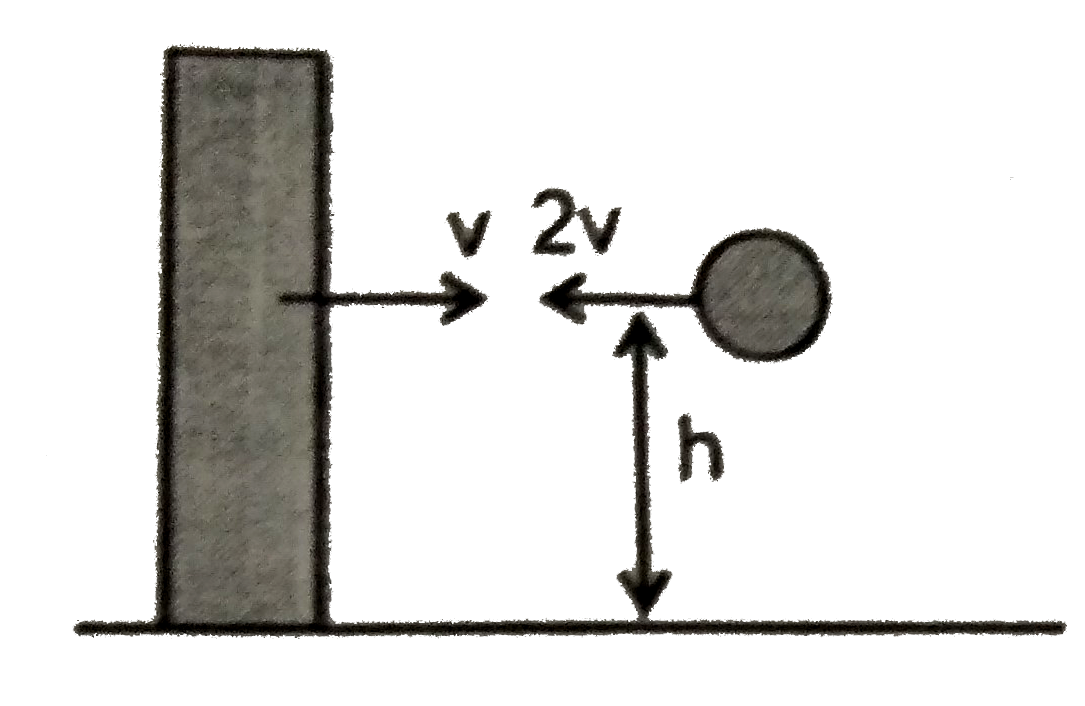Define coefficient of viscosity. Explain Stoke's law and explain the conditions under which a rain drop attains terminal velocity vt. Give the expression for vt.
Coefficient of viscosity (η) : The coefficient of viscosity is defined as the tangential force per unit area of the layer, required to maintain unit velocity gradient.
η=FA(ΔVΔx)
S.I unit →Nm−2 s (or) Pas
C.G.S unit → Poise
Dimensional formula =[ML−1T−1]
Stoke.s law " According to this law the viscous force acting on a moving body which is spherical in shape is directly proportional to
i) Coefficient of viscosity of fluid (η)
ii) Radius of the spherical body (r)
iii) Velocity of the body (v)
∴Fαηrv
F=Kηrv
Where K is a constant of proportionality. Experimentally it was found to be 6π.
∴F=6πηrv
When rain drop falling through air from the clouds each the surface with almost constant speed through they are moving under gravitational force. This velocity is called terminal velocity. After attaining the terminal velocity, net force acting on the rain drop is zero.
According to Stokes law, Fαηrv
F=6πηrv (∴π=K=Proportionality constant)
Let ρ, r be the density and radius of the sphere.
The fluid density be σ
The forces acting on the sphere are
i) Weight of the sphere W=mg
W=Vρg=43πr3ρg........(1)
ii) The force of buoyancy (B)=Vσg=43πr3σg.......(2)
iii) Viscous force (f)=6πηrv.....(3)
When the sphere attains terminal velocity (vt), the net force on the body becomes xero.
∴ At terminal velocity
Net downward force=Net upward force
W=B+f,W−B=f
43πr3ρg−43πr3σg=6πηrvt,∴43πr3g(ρ−σ)=6πηrvt
Vt=29r2g(ρ−σ)η.....(4)

Similar Questions
(a) Explain Stokes Law
(b) Define terminal velocity
(c) Describe an experiment to determine the terminal velocity
View SolutionDefine Stoke’s law. Define and derive an expression for terminal velocity.
View SolutionDefine Stoke’s law. Define and derive an expression for terminal velocity.
View SolutionA solid sphere, of radius R acquires a terminal velocity v1 when falling (due to gravity) through a viscous fluid having a coefficient of viscosity h. The sphere is broken into 27 identical solid spheres. If each of these spheres acquires a terminal velocity, v2, when falling through the same fluid, the ratio (v1/v2) equal 9x. Find the value of x.
View SolutionAn object of mass m, initially at rest under the action of a constant force F attains a velocity v in time t. Then, the average power supplied to mass is
View SolutionAn object of mass m, initially at rest under the action of a constant force F attains a velocity v in time t. Then, the average power supplied to mass is
View SolutionA sphere is dropped under gravity through a fluid of viscosity η. Taking the average ac celeration as half of the initial ac celeration, show that the time to attain the terminal velocity is independent of the fluid density.
View SolutionA ball collides elastically with a massive wall moving towards it with a velocity of v as shown. The collision occurs at a height of h above ground level and the velocity of the ball just before collision is 2v in horizontal direction. The distance between the foot of the wall and the point on the ground where the ball lands, at the instant the ball lands, will be :
 View Solution
View SolutionRain drops fall from a certain height with a terminal velocity v on the ground. The viscous force is F=5π≠rv Hence ≠ is coefficient of viscosity r the radius of rain drop and v is speed Then work done by all the forces acting on the ball till it reaches the ground is proportional to :
View SolutionAt a given place two rain drops of volumes V and 8V are falling down with terminal velocities. Their terminal velocities are in the ratio
View Solution

